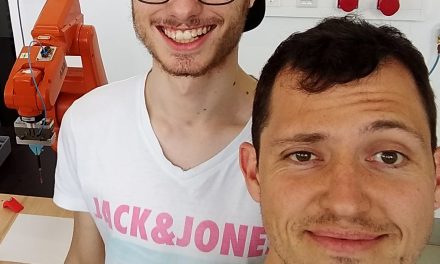Prof. Sangbae Kim/
Director of the Biomimetic Robotics Laboratory
Associate Professor of Mechanical Engineering at MIT
TF: What is the difference between the cheetah robot and conventional robots?
Kim: The common robots we know are manufacturing robots. Their possibilities are very limited as they perform always the same movements in very controlled and limited circumstances. The cheetah robot is a bio-inspired robot that mimics the movement of the worlds fastest animal – the cheetah. The primary goal of our research is to understand the locomotion of animals. We studied the motion of a cheetah and applied its principles to our mechanical version of a cheetah. Our robot currently runs thirteen miles per hour and has a sensor built in to identify obstacles and then jump up to the height of forty centimetres in order to overcome the hurdle. It is as efficient concerning the use of energy as the animal. Previously most legged robots were powered by internal combustion engines and hydraulic transmission as it was thought to be the only way to acquire the necessary speed and power to run and support itself. With our cheetah robot we showed for the first time, that electric power can be as efficient, as well as use less energy and produce less noise. To build this dynamic robot we had to built everything from scratch, including the control system, control algorithm as well as use custom-designed high-torque-density electric motors (designed in-house at MIT) and amplifiers that control the motors (designed in-house as well).
If you look into the next ten to fifteen years, what will derive of the cheetah prototype?
Kim: The cheetah by itself is a locomotion platform – we study how to move dynamically and how to balance. We are also working on another platform, we haven´t published yet. It has a human/monkey shape but for now walks on four legs like the cheetah. That platform is designed to perform high power tasks like opening heavy doors, using machines as well as working in dangerous environments like fire or in nuclear plants, where radiation is to harmful for human beings. I think in about five years from now our platform will be able to walk like a dog, then stand up like a human or a monkey and perform physical work like a human in a dangerous environment.
Do you think midterm this development will also have impact on our daily lives?
Kim: In the future legged robot technology will provide robotic transportation which will be able to literally go anywhere. Wheelchairs for example can be replaced by legged robots, for which stairs or the lack of roads are no obstacles. The findings from our research also have influence on the development of prostheses.
Will new jobs evolve from dynamic robotics?
Kim: If dynamic robots go into mass production we will have robot factories like we have car factories. We will need mechanics to maintain and repair our robots. Robots are more complex than cars and have at least 20 motors and sensors instead of one. A whole new line of business will grow from robotics. Robotic designers, mechanical engineers, product designers and computer scientist are jobs needed in this field.
Do you think robots will significantly replace the jobs of humans in the near future?
Kim: I don´t think this will happen very soon as the range of tasks the robots can perform are still limited and need to be controlled by humans. Washing the dishes, for example – any human can do that reasonably, yet no robot so far can perform such a task. The lack of sensors and the lack of judgement prevents the robots from the accomplishment of such a simple job. A machine needs to have a clear goal like ‘maximise this value’ or ‘minimise this value’. When you´re cleaning dishes you’re not really sure what your´re maximising or minimising. What exactly is clean enough? Humans have a very vague set of guidelines, as we have the ability judge.
I think in our lifetime robots will be only used in situations that are too dangerous for humans. Even in these situations the robots need to be controlled by humans remotely. I think in most lines of work, it will still be cheaper to hire a human instead of buying a robot and humans will still do the work twenty times better. Robots should be used in areas where humans can not work well. I don´t think that the impact will be that high.
Of course we lost a lot of jobs due to manufacturing robots, that is happening already right now and this will continue to happen. But mobile robots are more likely to assist humans than to take away their jobs.
What is your vision?
Kim: Right now we show the mobility of the four legged machine and we are working on the human platform that can stand up and perform tasks. In five years from now we will have a robot we can send into fire and dangerous situation where we can save the lives of people.
Prof. Sangbae Kim speaks at the MIT conference Vienna 2015, march 25-26
http://ilp.mit.edu/conference.jsp?confid=97&tabname=speakers#speaker_1264






